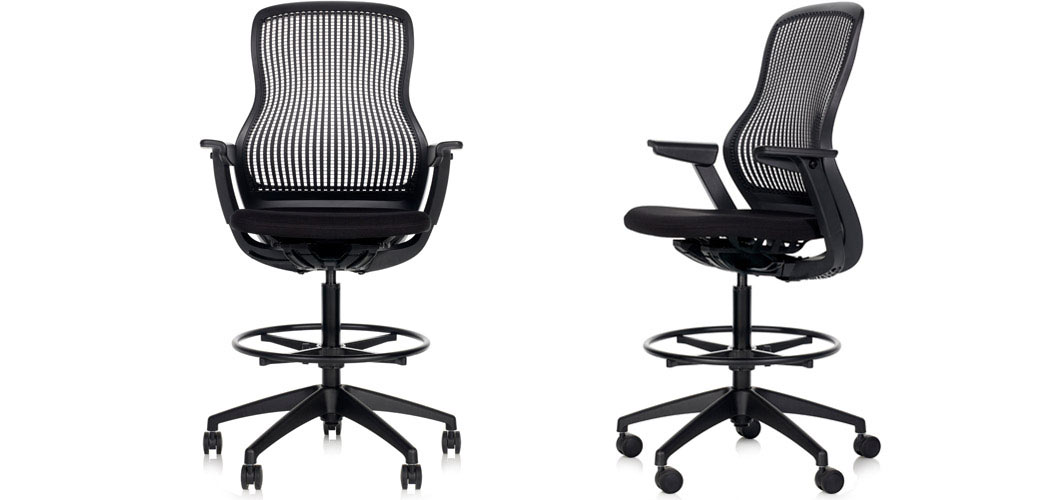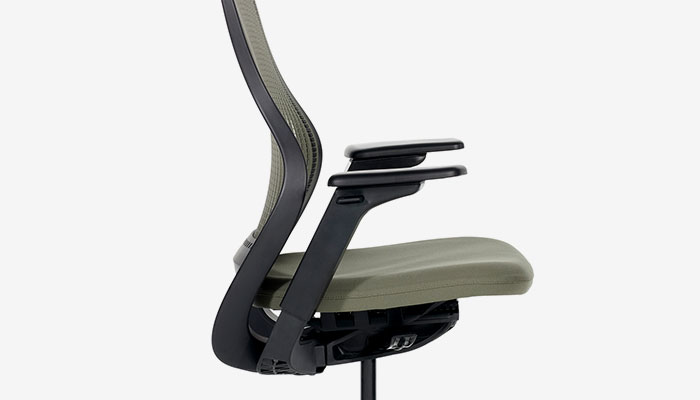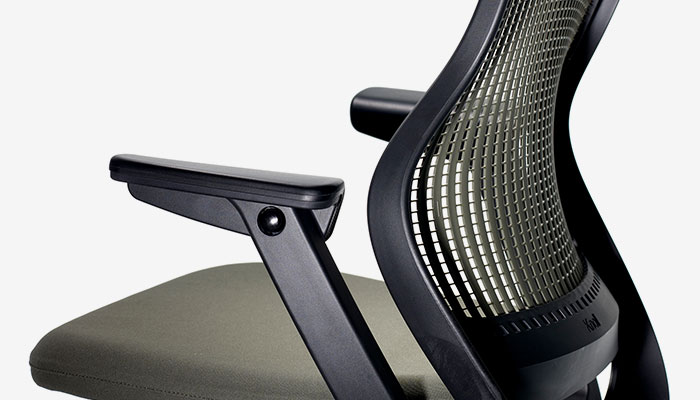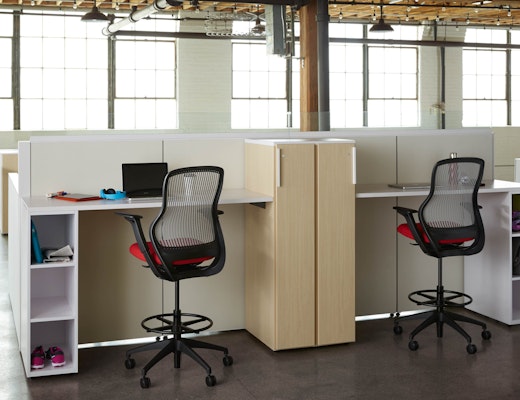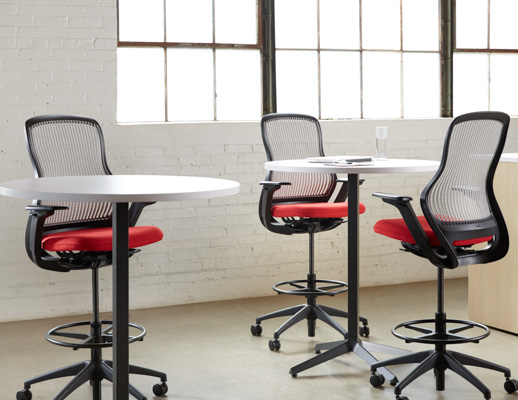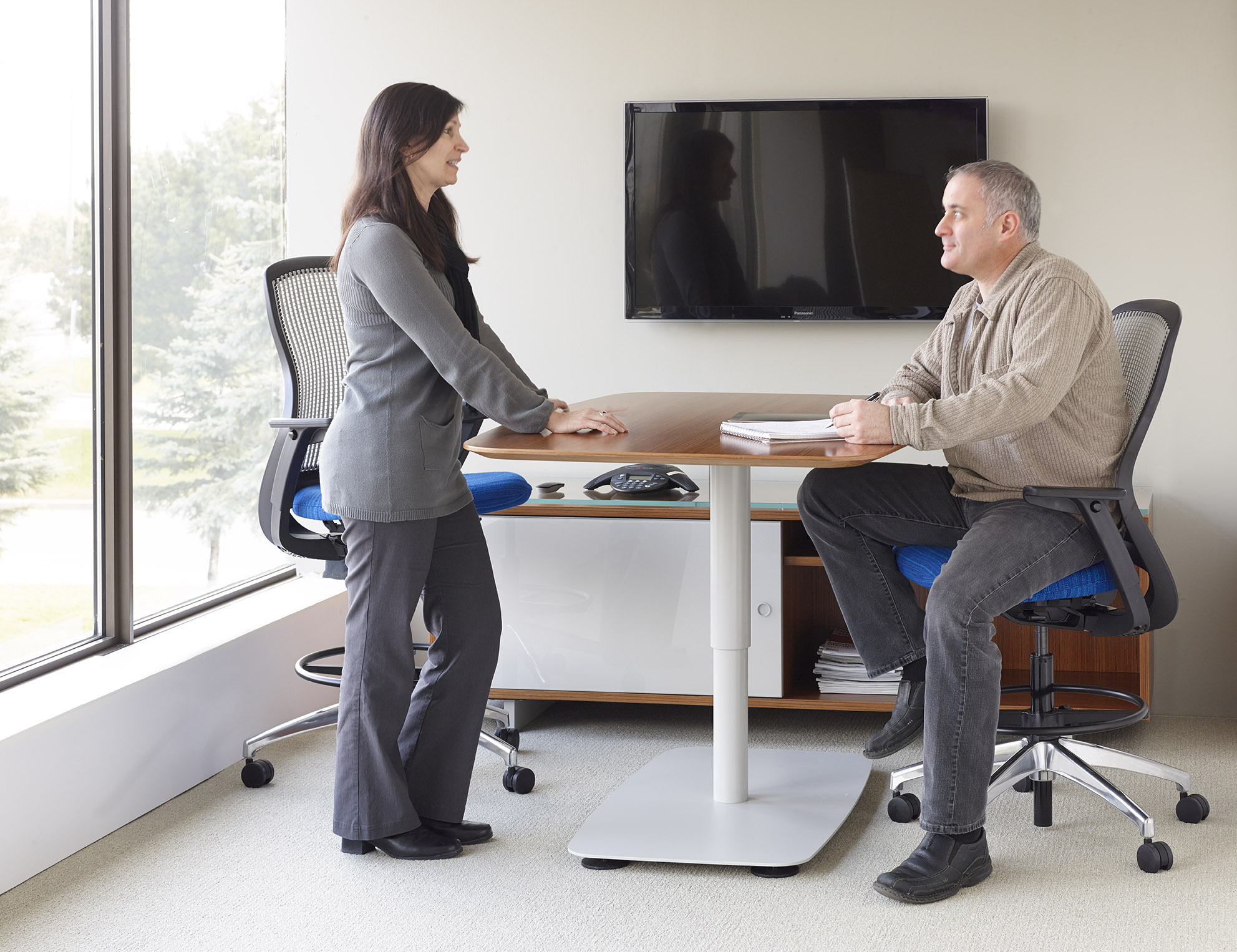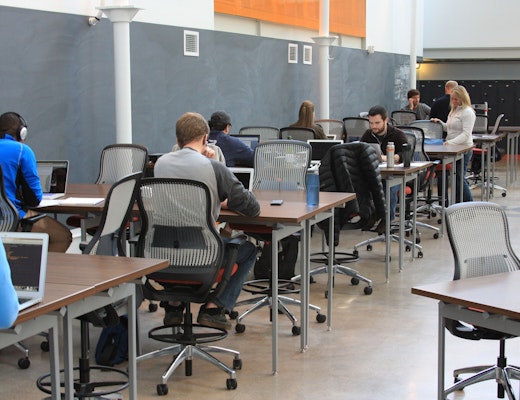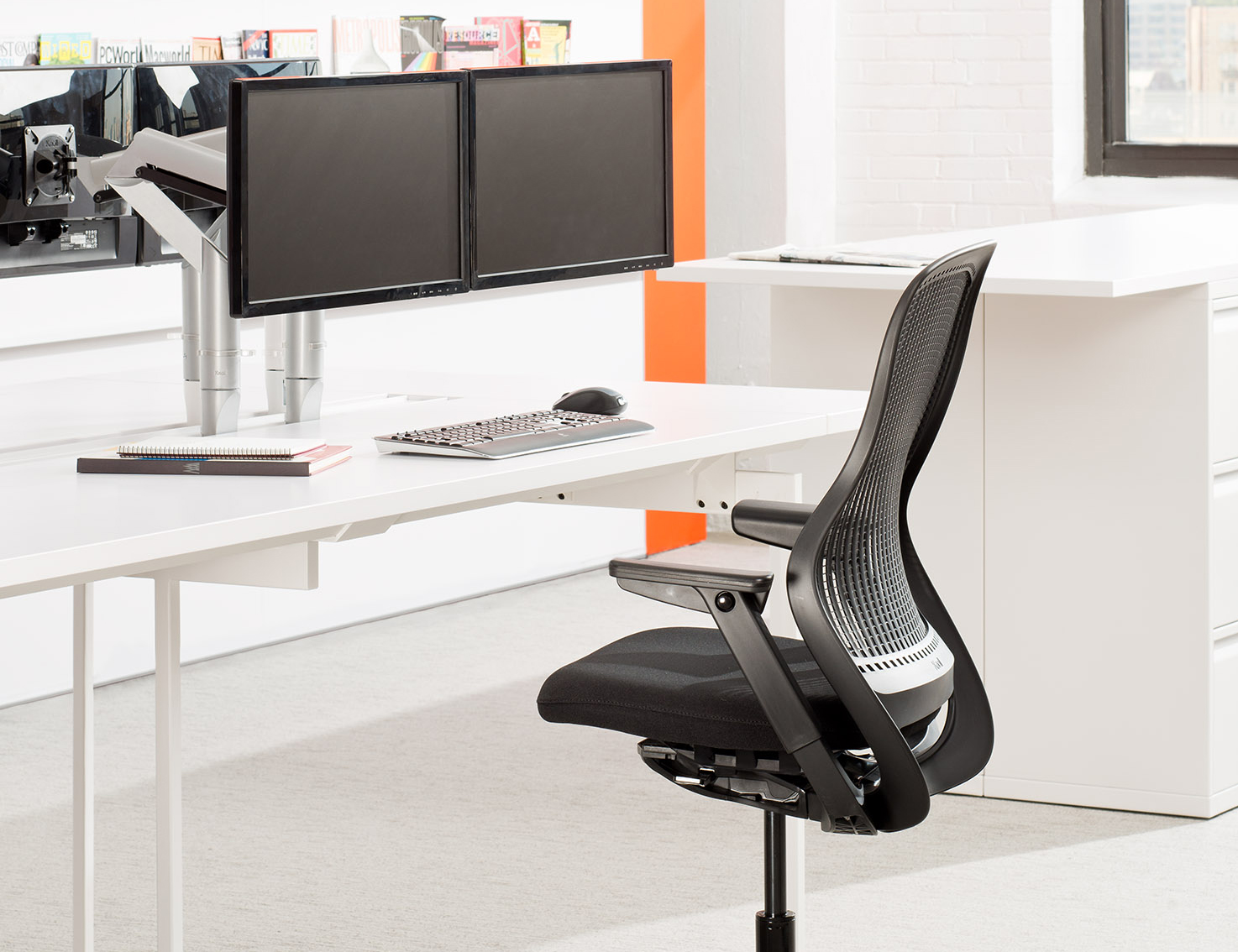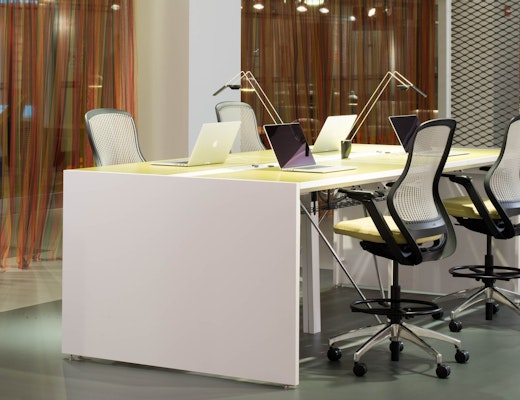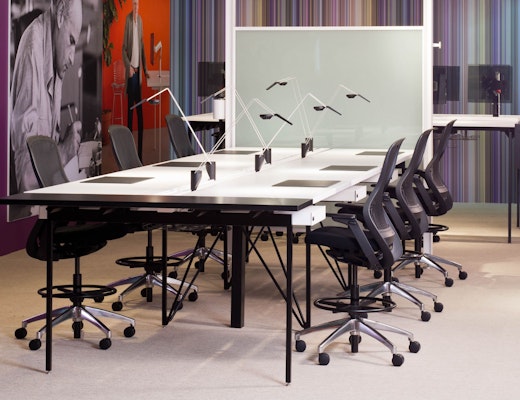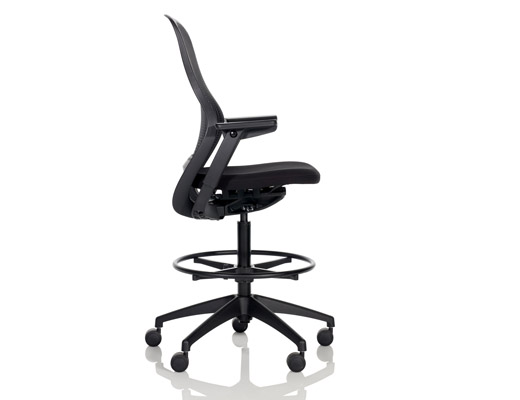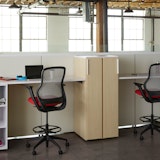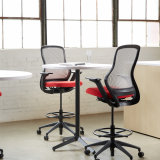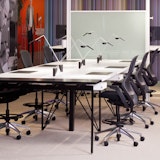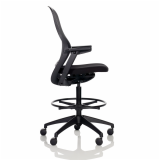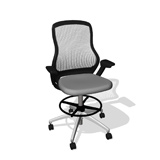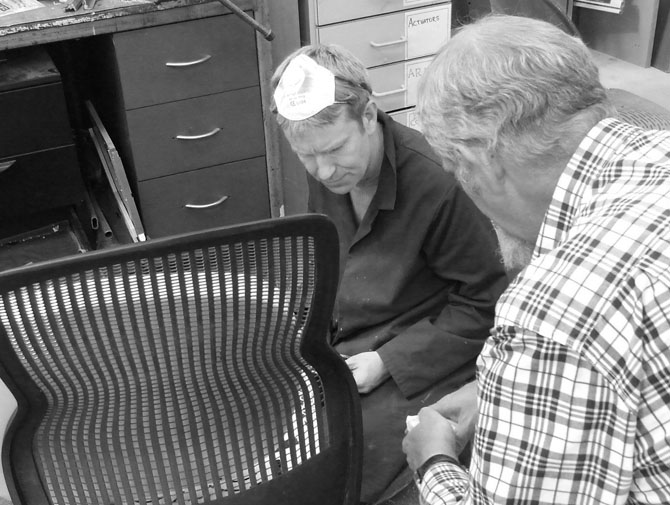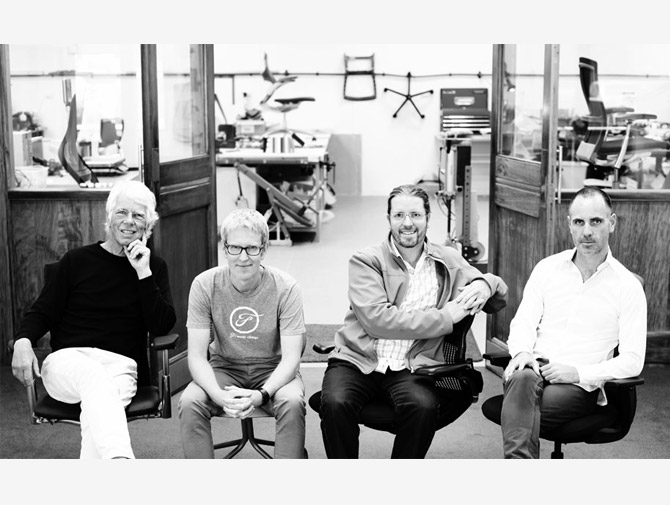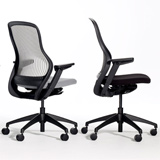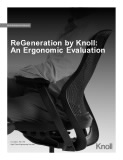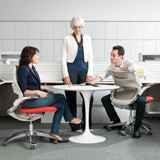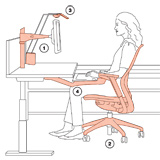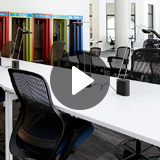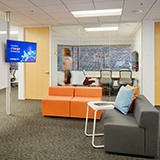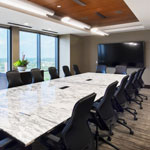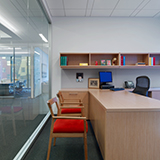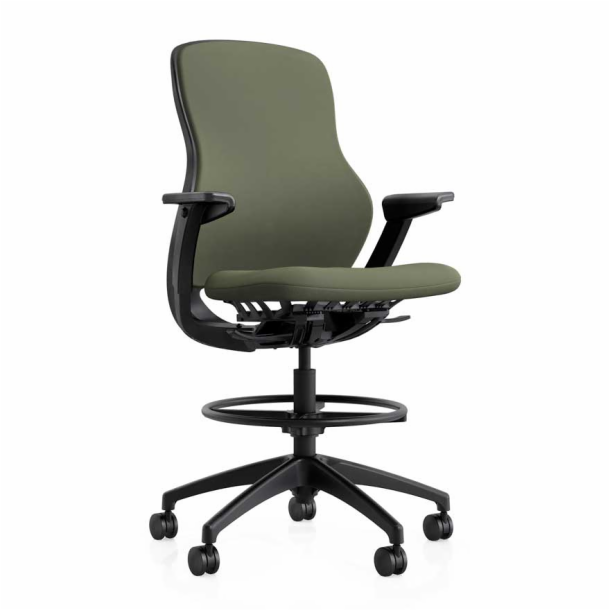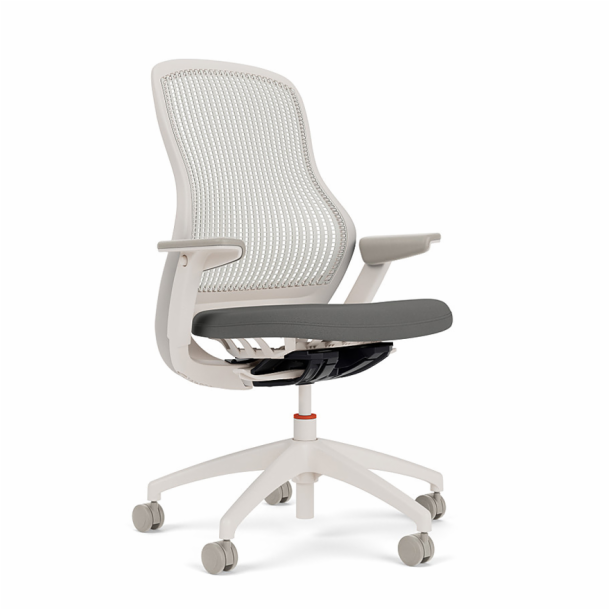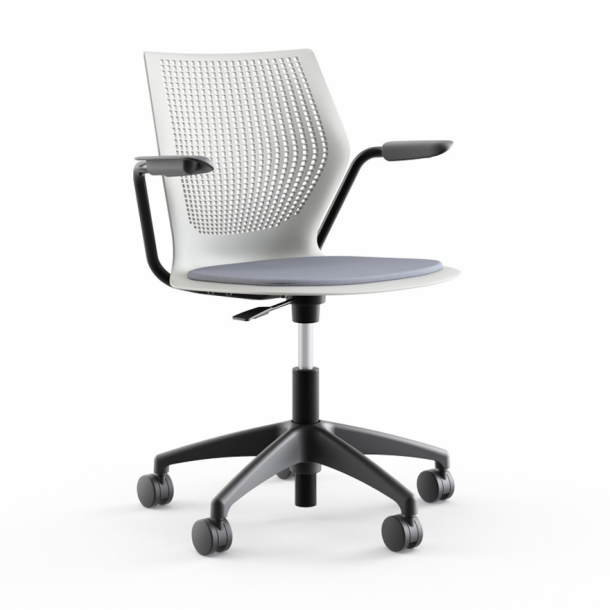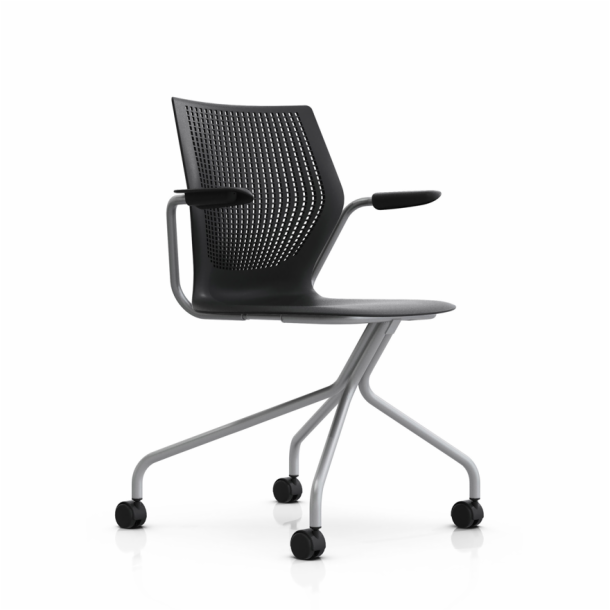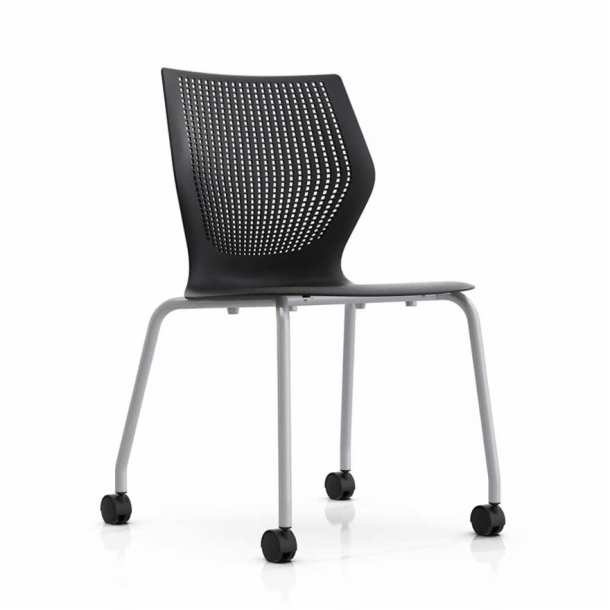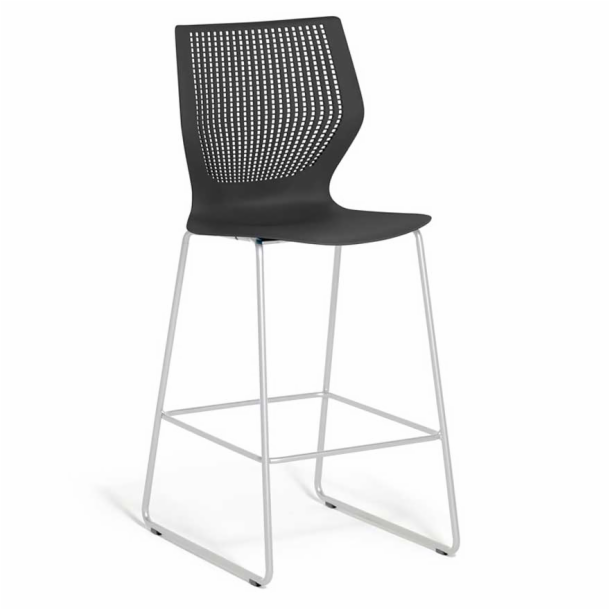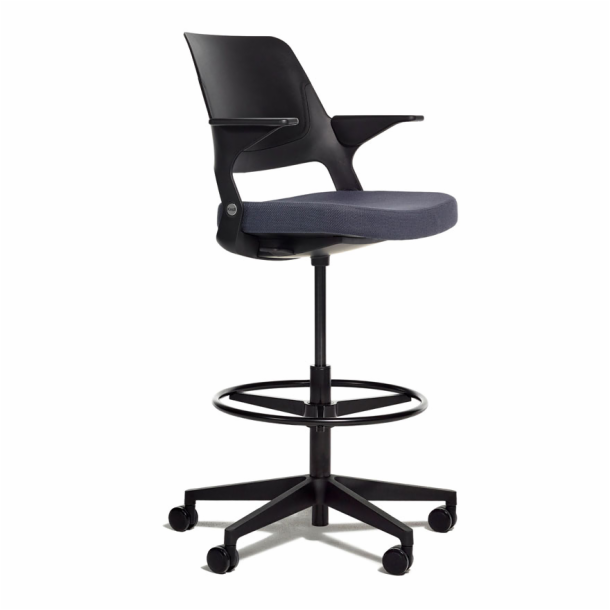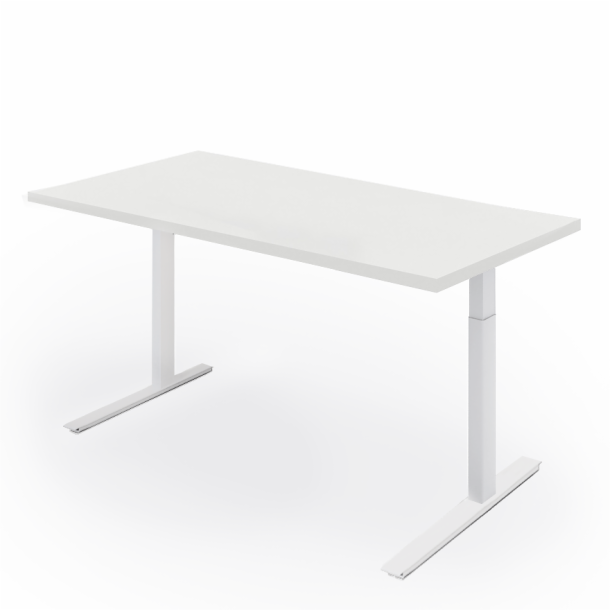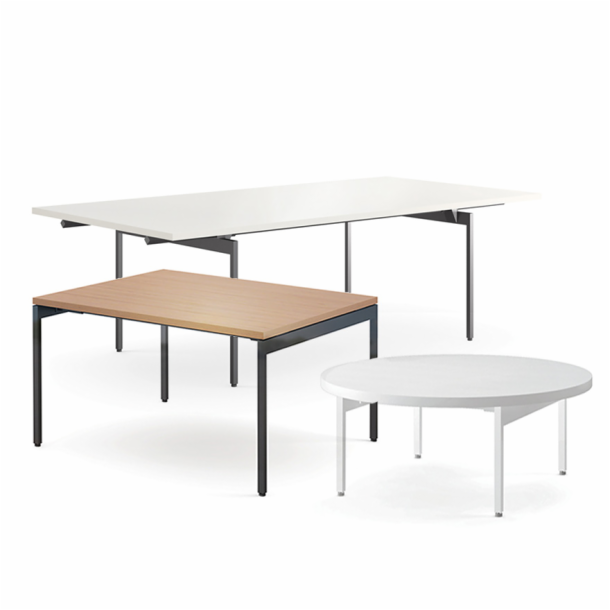Principals at Formway Design, the New Zealand-based design group, credit the many lessons learned during the extensive design and prototyping process for the Generation chair and years of close collaboration with materials experts and product engineers at Knoll for the relatively quick two-year time span between the conception and launch of the ReGeneration chair.
Formway Lead Designer Kent Parker cites the elegantly attenuated bridges of architect-engineer Santiago Calatrava as a model for his team’s strategy of using the structural diagram to dictate the overall form. By celebrating rather than hiding the interplay of loads and forces typically applied to work chairs, Formway was able to “minimize components and minimize materials so we get [directly] to performance,” explains Parker. Benjamin Pardo, Director of Design at Knoll, concurs, pointing to the designers’ use of a curve for the chair’s back as the central element and one that equally and economically serves both aesthetic and structural purposes and, at the same time, provides comfort. “Visually there is not a lot of chair there,” notes Pardo, who explains that this economy of means not only results in an appealingly slim silhouette, it also sends a strong message about making efficient structures, and, so, by implication, the importance of conserving natural resources.
And there was an added benefit to both revealing and streamlining the structure, according to Formway’s lead engineer Paul Wilkinson, who points out that “more parts add complexity and [therefore] cost,” something counter to the fundamental purpose of the ReGeneration chair—bringing dynamic seating to a wider audience.
















